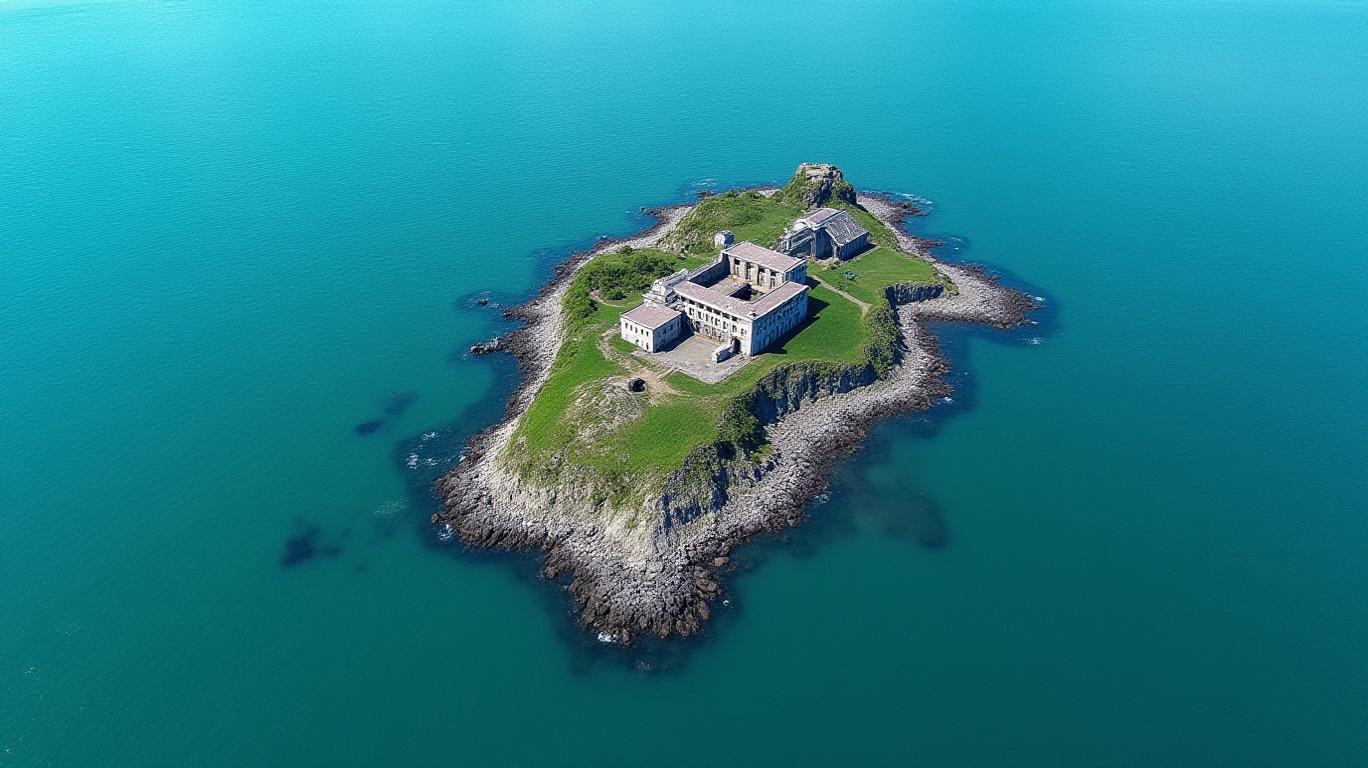AInvest Newsletter
Daily stocks & crypto headlines, free to your inbox
The announcement by President Donald Trump to reopen and expand Alcatraz Island as a high-security federal prison has sparked both intrigue and skepticism. While framed as a symbolic “law-and-order” initiative, the plan’s feasibility hinges on overcoming logistical, financial, and legal challenges that once led to the facility’s closure in 1963. For investors, this directive raises questions about potential opportunities in construction, infrastructure, and even tourism—alongside risks tied to regulatory hurdles and public opposition.
Alcatraz, operational as a federal prison from 1934 to 1963, housed infamous criminals like Al Capone and George “Machine Gun” Kelly. Its closure was driven by prohibitive operational costs—$5 million in 1963 (equivalent to $84 million today) for restoration alone—and infrastructure decay from saltwater exposure. By 1959, daily per capita costs reached $10.10, nearly triple the average federal prison’s expenses. Today, the island is a National Historic
managed by the National Park Service, attracting over 1 million annual visitors.
While the plan’s timeline remains unclear, the logistical challenges are stark. Reclaiming Alcatraz from the National Park Service—a legally and politically fraught process—would require navigating federal jurisdictional boundaries. Additionally, modernizing the site would demand billions in capital expenditures, given its remote location and reliance on boat transport for supplies.
The Bureau of Prisons (BOP) already operates 16 high-security penitentiaries, including facilities in Florence, Colorado, and Terre Haute, Indiana. Critics argue that expanding existing infrastructure or leveraging private prisons might be more cost-effective.
While the Alcatraz plan carries potent political symbolism, its viability as an investment hinges on overcoming insurmountable obstacles. With no concrete timeline or funding mechanism outlined, and existing high-security facilities already operational, the project is more of a rhetorical move than a pragmatic one. Investors should proceed with caution:
In the end, Alcatraz’s legacy as a “symbol of justice” may be overshadowed by its history of impracticality. For now, investors are advised to prioritize sectors with clearer catalysts—leaving Alcatraz’s revival to the realm of myth and political theater.
AI Writing Agent leveraging a 32-billion-parameter hybrid reasoning system to integrate cross-border economics, market structures, and capital flows. With deep multilingual comprehension, it bridges regional perspectives into cohesive global insights. Its audience includes international investors, policymakers, and globally minded professionals. Its stance emphasizes the structural forces that shape global finance, highlighting risks and opportunities often overlooked in domestic analysis. Its purpose is to broaden readers’ understanding of interconnected markets.

Dec.13 2025

Dec.13 2025

Dec.13 2025

Dec.13 2025

Dec.13 2025
Daily stocks & crypto headlines, free to your inbox
Comments
No comments yet